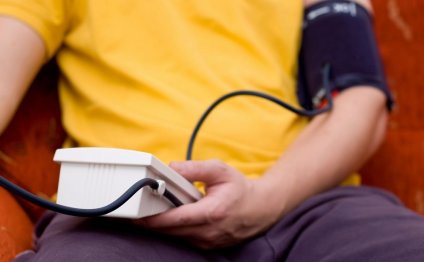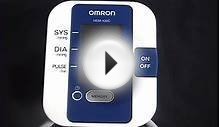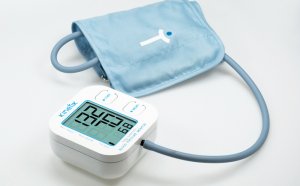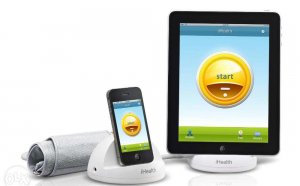
Monitoring blood pressure at home
Tracking your blood pressure readings over time will help you and your doctor make more educated treatment decisions.
For the millions of women with high blood pressure, intermittent blood pressure checks at the doctor's office might not be enough. Health organizations such as the American Heart Association and American Society of Hypertension (hypertension is the medical term for high blood pressure) recommend that people with high blood pressure monitor their readings more often at home.
Home blood pressure monitors are accurate and easy to use. The information you get from tracking your blood pressure levels regularly at home can help you lower your risk for a heart attack—or other heart-related event—better than occasional measurements at a doctor's office.
Dr. Randall Zusman, director of the Division of Hypertension at Harvard-affiliated Massachusetts General Hospital, recommends home blood pressure monitoring to his patients. "It gives some feedback about how they're doing, and that helps reinforce the efforts they're making, " he says. Taking your blood pressure at home also helps avoid "white-coat syndrome, " the nervous surge in blood pressure some people experience during a doctor's visit.
Home monitoring and blood pressure goals
Home blood pressure monitoring can help guide your treatment by showing whether your medicines are working or if you need to take a different approach. A study published in March 2013 in Circulation: Cardiovascular Quality and Outcomes found that people who monitored their blood pressure at home were more likely to reach their blood pressure goals than those who were monitored only by their doctor.
Anyone who has high blood pressure, or is at risk for it, can benefit from home blood pressure monitoring, especially women with diabetes or kidney disease. You might also want to consider taking your blood pressure at home if your levels tend to fluctuate. Getting an accurate accounting of the variations will help your doctor better treat your blood pressure.
Women with symptoms such as dizziness or headaches can also take regular readings "to see if their symptoms correlate to their blood pressure, " Dr. Zusman says.
Some conditions can make it harder to take your own blood pressure—particularly if you have an irregular heart rhythm known as atrial fibrillation. If this is uncontrolled, you may not be able to get an accurate reading with a home blood pressure monitor. Even if your arrhythmia is controlled, you may need to take your blood pressure several times in a row for accuracy.
If you're interested in home blood pressure monitoring, here's how to get started.
Step 1: Buy a blood pressure monitor
Pharmacies and online merchants sell a variety of blood pressure monitors. Monitors typically range in price from $50 to $100, although a higher price doesn't necessarily correlate to better quality. Ask your health insurance company whether it will cover part or all of the cost.
When shopping for a blood pressure monitor, look for these features:
- Buy a monitor that goes around your upper arm. Dr. Zusman doesn't recommend wrist or finger monitors because they aren't as accurate.
- An automatic monitor is easiest to use, because it doesn't require a stethoscope and the cuff inflates by itself. Manual monitors require you to squeeze a bulb to inflate the cuff, which can be hard to do if you have arthritis.
- Choose a monitor that meets standards for your age and health conditions according to an organization such as the European Society of Hypertension, dabl Educational Trust, or the Association for the Advancement of Medical Instrumentation (AAMI). Each organization has posted its list of approved devices on its website. [For a comprehensive list of approved devices, visit:
- Make sure the cuff fits your arm. If it's too large or too small, the reading won't be accurate.
- Check that the numbers on the dial or display are large enough for you to read clearly.
- Determine what other features you want in a blood pressure monitor. Some monitors will take an average of your last few readings, record your measurements over time, and send them to your doctor via your smartphone.
Step 2: See your doctor
Next, make an appointment with your doctor and bring the monitor with you. A nurse or assistant will make sure it is properly calibrated and will teach you how to use it correctly. Return to your doctor's office with your monitor at least once a year for rechecks, Dr. Zusman advises. Also discuss with your doctor how to use your home blood pressure readings to fine-tune your treatment.
Step 3: Determine when to take your blood pressure
For most women, Dr. Zusman recommends taking two to three blood pressure readings in the morning and two to three readings at night, a few times a week. Don't go overboard and take your blood pressure constantly. That's counterproductive. "You become so focused on your blood pressure that every time the cuff comes near your arm your blood pressure goes up just from the anxiety, " says Dr. Zusman.
Blood pressure medicines |
||
|
Drug class |
Examples (generic, brand names) |
How they lower blood pressure |
|
ACE (angiotensin-converting enzyme) inhibitors |
benazepril (Lotensin), captopril (Capoten), lisinopril (Prinivil, Zestril), ramipril (Altace) |
Reduce the amount of angiotensin, a chemical that causes the arteries to narrow, thereby widening blood vessels |
|
Angiotensin-receptor blockers |
candesartan (Atacand), losartan (Cozaar), valsartan (Diovan) |
Block the effects of angiotensin II, a compound that narrows the arteries |
|
Beta blockers |
atenolol (Tenormin), metoprolol (Lopressor), metoprolol succinate (Toprol-XL), propranolol hydrochloride (Inderal) |
Reduce the heart rate and decrease the workload on the heart |
|
Calcium-channel blockers |
amlodipine (Norvasc, Lotrel), diltiazem (Cardizem, Dilacor), nisoldipine (Sular) |
Slow the movement of calcium into the smooth muscle cells of the heart, which makes the heart contract less forcefully and relaxes blood vessels |
RELATED VIDEO



Share this Post
Related posts
Kinetik Blood pressure monitoring Review
Kinetik was born from a single idea. That health monitors are not just for people with diagnosed conditions, such as Hypertension…
Read MoreBlood pressure monitoring System
John F Stover, Reto Stocker contributed equally to this work. Background Cardiovascular monitoring is a standard procedure…
Read More











